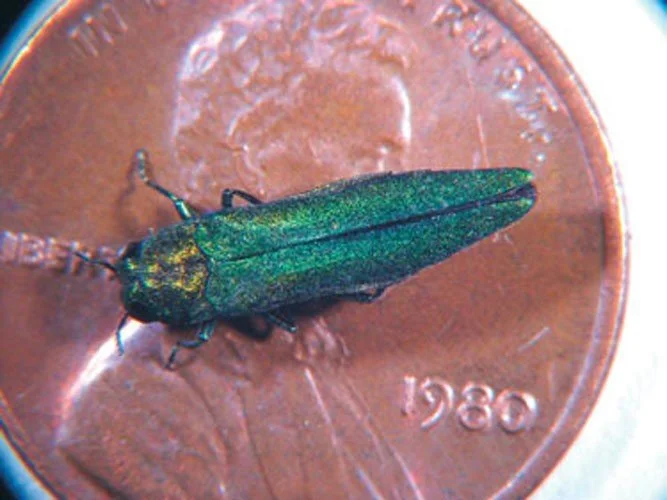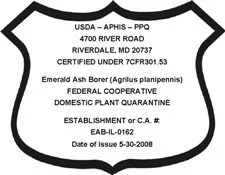Emerald Ash Borer
Xylem Ltd. joins the fight against the Emerald Ash Borer!
Xylem, Ltd. is proud to be certified as a landscape material distribution supplier who has been issued a USDA compliance agreement for interstate commerce as an approved mill inside the quarantined area, both at our Cordova, IL and Channahon, IL facilities.
We are determined to meet the stringent requirements called for by USDA APHIS - Plant Protection & Quarantine Compliance Agreement for the State of Illinois. We stand ready for impromptu inspections by the USDA and/or IDA. We at Xylem, Ltd. take this infestation seriously and are working diligently to do our part to stop the spread of this destructive infestation. Following are answers to some of the most common questions regarding EAB:
1. Where did the Emerald Ash Borer come from?
The natural range of Agrilus Planipennis, or theEmerald Ash Borer, is eastern Russia, northern China, Japan, and Korea. Before June of 2002, it had never been found in North America.
2. How did they get here?
Of course we don't know for sure, but they most likely came in ash wood used for stabilizing cargo in ships or for packing or crating heavy consumer products.
3. What types of trees does the emerald ash borer attack?
In North America, it has only been found in ash trees. Trees in woodlots as well as landscaped areas are affected. Larval galleries have been found in trees or branches measuring as little as 1-inch in diameter. All species of North American Ash appear to be susceptible.
4. What happens to infested ash trees?
The canopy of infested trees begins to thin above infested portions of the trunk and major branches because the borer destroys the water and nutrient conducting tissues under the bark. Heavily infested trees exhibit canopy die-back usually starting at the top of the tree. One-third to one-half of the branches may die in one year. Most of the canopy will be dead within 2 years of when symptoms are first observed. Sometimes ash trees push out sprouts from the trunk after the upper portions of the tree dies. Although difficult to see, the adult beetles leave a "D"-shaped exit hole in the bark, roughly 1/8 inch in diameter, until they emerge in June.





